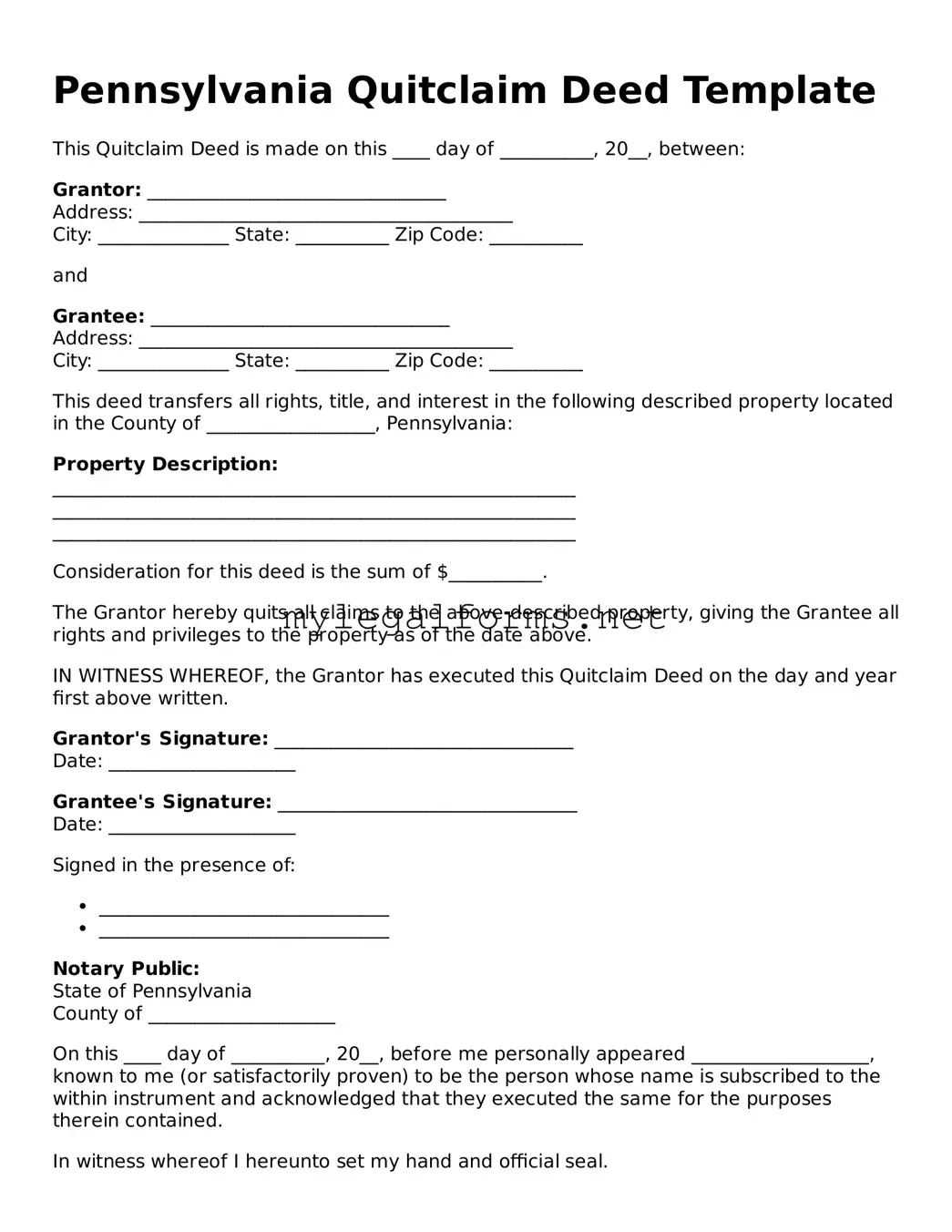Pennsylvania Quitclaim Deed Template
This Quitclaim Deed is made on this ____ day of __________, 20__, between:
Grantor: ________________________________
Address: ________________________________________
City: ______________ State: __________ Zip Code: __________
and
Grantee: ________________________________
Address: ________________________________________
City: ______________ State: __________ Zip Code: __________
This deed transfers all rights, title, and interest in the following described property located in the County of __________________, Pennsylvania:
Property Description:
________________________________________________________
________________________________________________________
________________________________________________________
Consideration for this deed is the sum of $__________.
The Grantor hereby quits all claims to the above-described property, giving the Grantee all rights and privileges to the property as of the date above.
IN WITNESS WHEREOF, the Grantor has executed this Quitclaim Deed on the day and year first above written.
Grantor's Signature: ________________________________
Date: ____________________
Grantee's Signature: ________________________________
Date: ____________________
Signed in the presence of:
- _______________________________
- _______________________________
Notary Public:
State of Pennsylvania
County of ____________________
On this ____ day of __________, 20__, before me personally appeared ___________________, known to me (or satisfactorily proven) to be the person whose name is subscribed to the within instrument and acknowledged that they executed the same for the purposes therein contained.
In witness whereof I hereunto set my hand and official seal.
_______________________________
Notary Public
My commission expires: ________________
